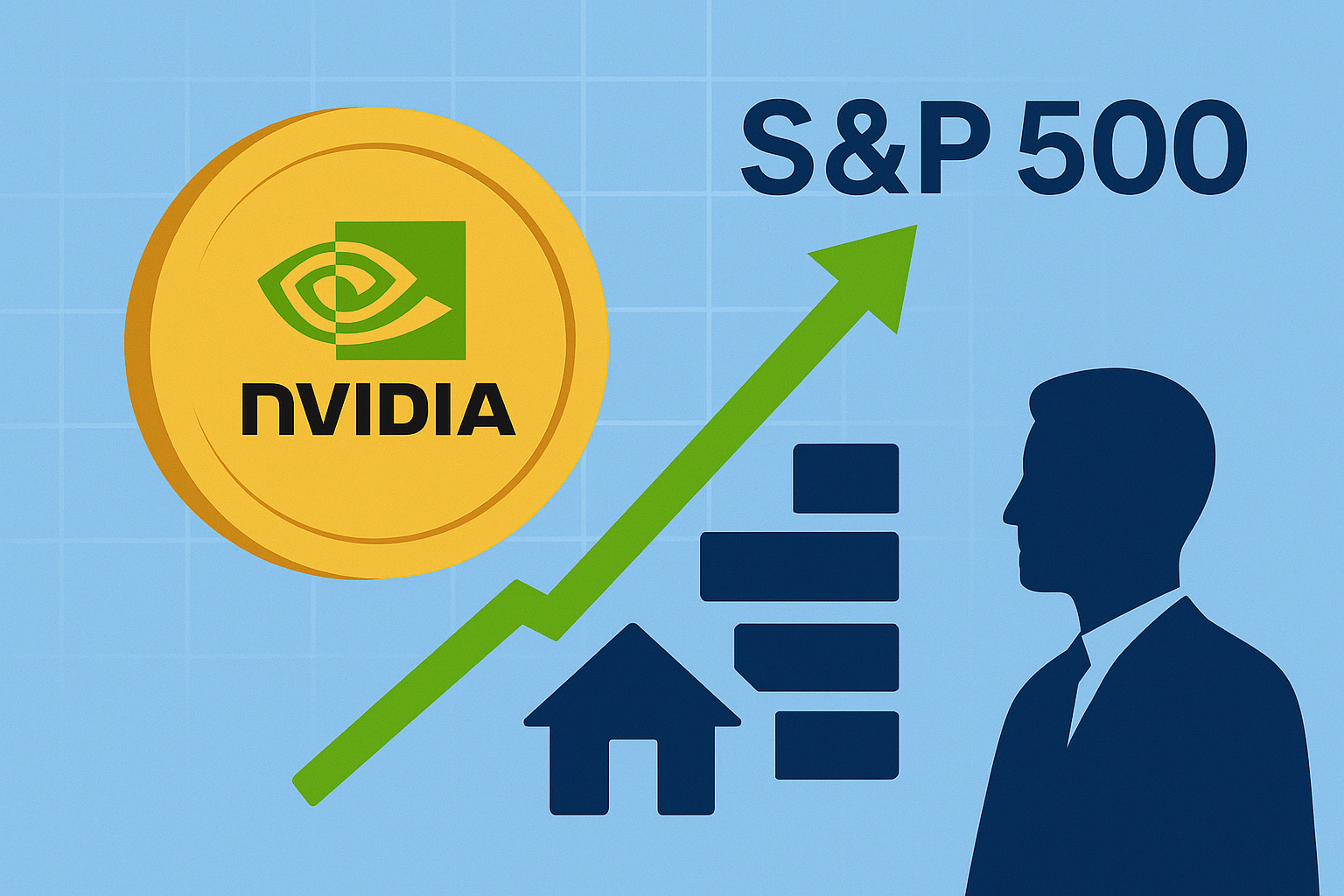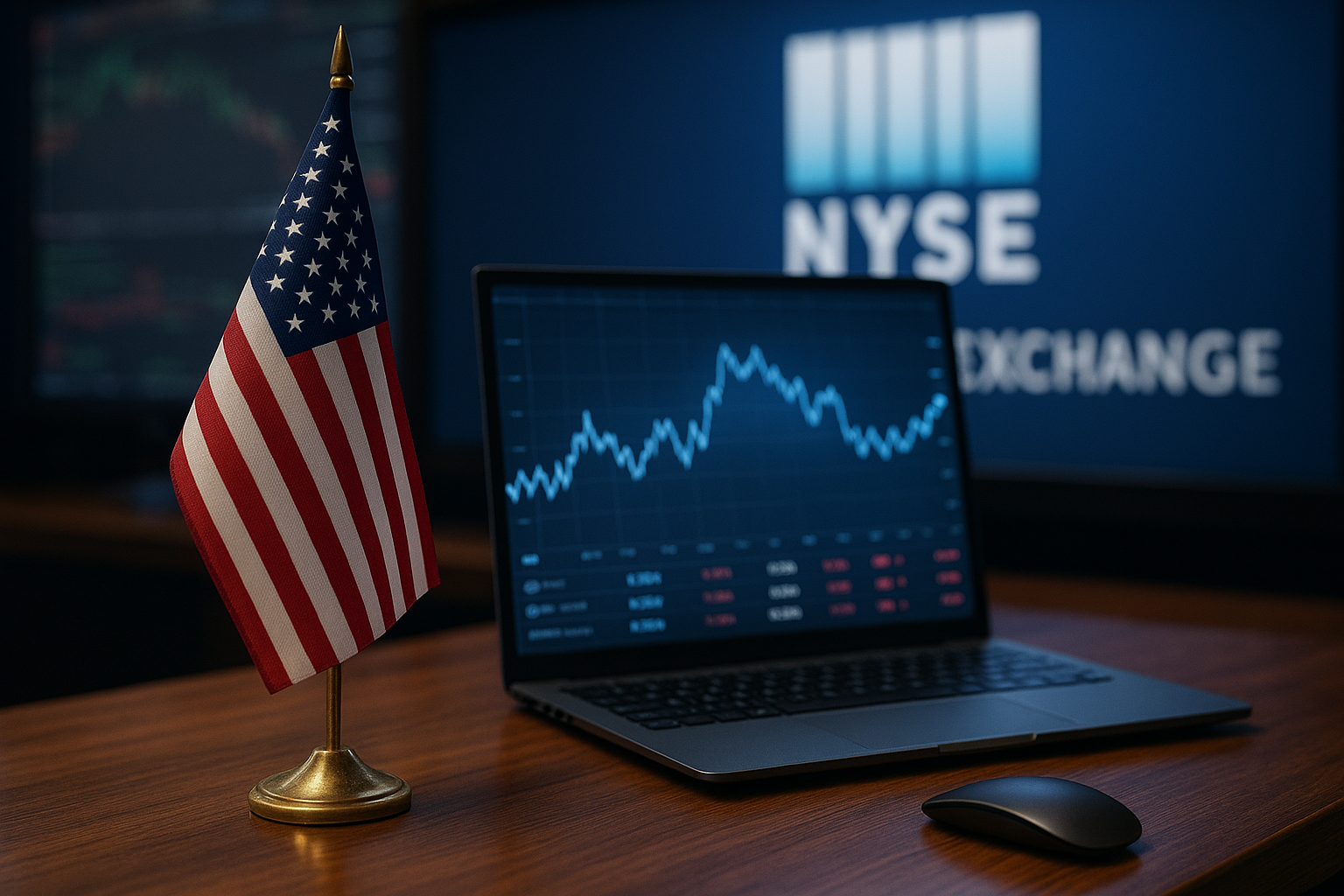The remarkable rise of Nvidia ($NVDA) has transformed it into the single largest component of the S&P 500, accounting for roughly 8% of the index. While the surge underscores the company’s pivotal role in artificial intelligence and data center growth, it has also reignited long-standing concerns about market concentration and diversification risks—especially for retirement accounts and passive index investors.
The Market Is Watching One Stock Too Closely
For years, investors have debated the “Magnificent Seven” megacaps—Apple, Microsoft, Amazon, Alphabet, Meta, Tesla, and Nvidia—that have disproportionately powered U.S. equity returns. But with Nvidia’s market capitalization now surpassing $4 trillion, its weighting in the S&P 500 has eclipsed even Apple and Microsoft.
This dominance matters because the S&P 500, the benchmark for trillions of dollars in retirement and index-tracking funds, is designed to be diversified. Instead, the index is becoming increasingly dependent on a handful of tech giants. According to Investopedia, Nvidia alone now contributes nearly 8% of the index—a level of single-stock concentration not seen since IBM in the 1970s.
Why This Matters for Investors
The concentration risk is more than a technicality. Investors whose portfolios are tied to the S&P 500—via 401(k)s, IRAs, or ETFs like the SPDR S&P 500 ETF Trust ($SPY)—are effectively betting heavily on Nvidia, whether they intend to or not.
Overconcentration amplifies vulnerability to idiosyncratic shocks. A stumble in Nvidia’s earnings, regulatory hurdles, or unexpected weakness in AI demand could reverberate across the entire market. As Nicholas Colas, co-founder of DataTrek Research, told Bloomberg, “When one stock drives so much of the market’s gains, the downside risks become asymmetric.”
Future Trends to Watch
- AI Spending Cycles: Nvidia’s strength is tied to hyperscalers like Amazon, Microsoft, and Google, which are rapidly scaling AI infrastructure. If spending slows, Nvidia’s valuation premium could face pressure.
- Regulatory and Geopolitical Risks: U.S. export restrictions on AI chips to China, a key Nvidia market, remain an ongoing risk. Any escalation could dent growth.
- Index Construction Pressures: As Nvidia’s weight grows, asset managers may face calls to re-examine how major indices are built. Already, some analysts have floated the possibility of reweighting or creating “equal-weight” alternatives to mitigate concentration.
- Investor Behavior: Retail and institutional investors alike may begin diversifying beyond U.S. large-cap tech, turning toward small-cap equities, international markets, or sectors like energy and industrials.
Key Investment Insight
For investors, the message is clear: while Nvidia remains central to AI growth, portfolios overexposed to megacap tech risk becoming fragile. Consider these strategies:
- Rebalance portfolios: Trim exposure to Nvidia-heavy index funds and explore equal-weighted S&P 500 ETFs (e.g., RSP) or global diversification options.
- Look beyond AI megacaps: Infrastructure providers, semiconductor equipment makers, and energy suppliers may offer secondary exposure to AI growth without the same concentration risks.
- Diversify geographically: European and Asian markets, especially those tied to clean energy and industrial transformation, may provide balance to U.S.-centric portfolios.
Nvidia’s dominance of the S&P 500 underscores both the power of AI and the risks of overconcentration. For investors, the task is to capture upside from innovation while safeguarding portfolios from single-stock dependency.
For more daily insights into market trends, AI developments, and investment strategies, follow MoneyNews.Today as your trusted source for investor intelligence.





